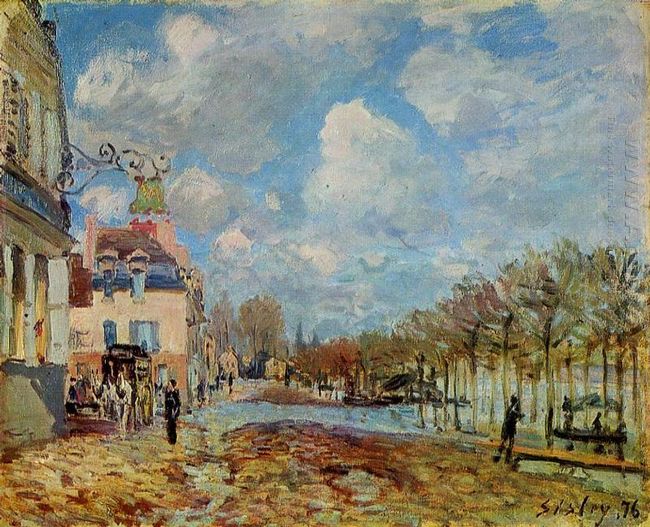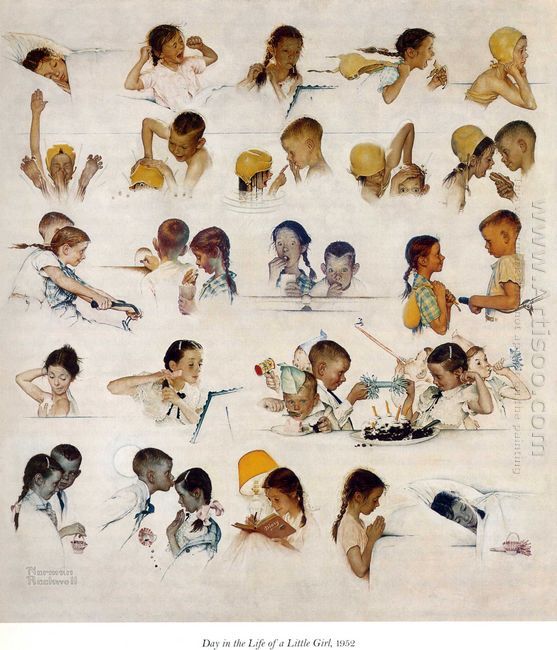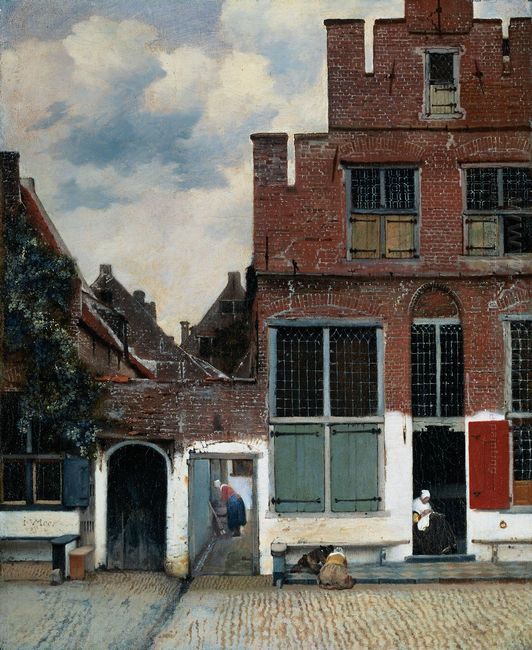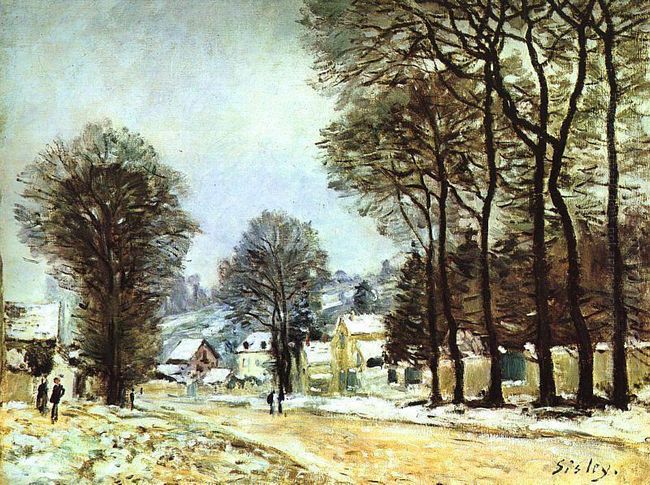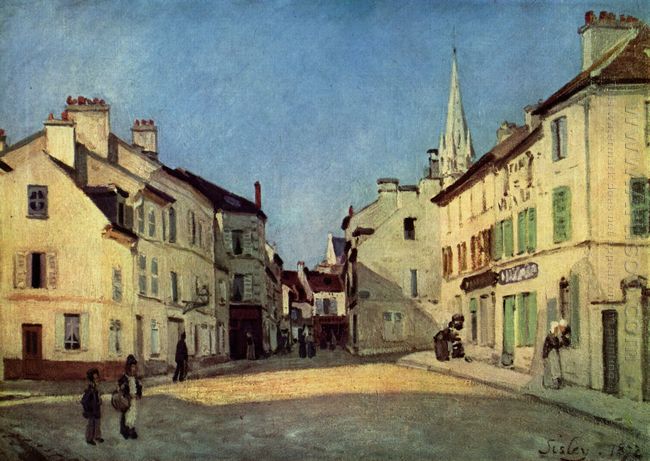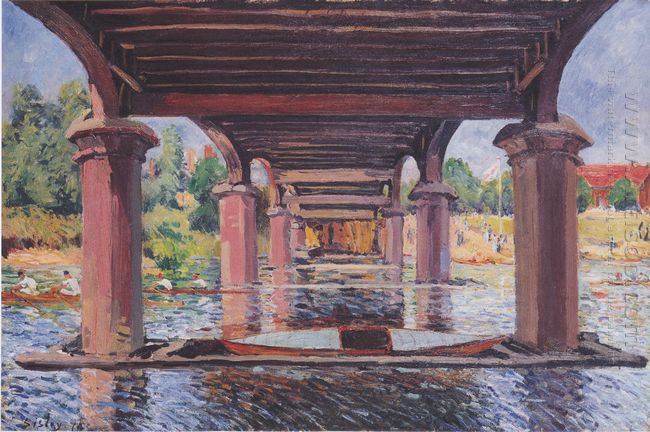In the studies of the Impressionist of its High Middle Ages, the works of Alfred Sisley are worth the whistle. He was the most consistent painter of the Impressionists. He almost invariably kept painting landscapes.
The well-educated Sisley since the childhood was fond of Shakespeare and was very attracted to the painting of Turner and Constable. He went to the studio of Glaire in Paris in 1862. Claude Monet and Renoir who were also belonged to the Impressionist were friends with him. His works in the early stage were with calm colors and always composed by green, dark and gray. We can see his admirations for Manet, Corot and Courbet.
He had the quiet exactly perception of tones, and was also interested in the structure and space. He and his companions went to the villages near Fontainebleau in 1863 and left some excellent landscapes there. He went to Malta Lord with Renoir and in 1866 and went to Honfleur with Bazille in 1867. During this time, his works were not successful because he learned painting late and his family was wealthy, the screens of his works were kind of consolation.
From 1872 to 1878 was his creative peak although his life started to become poor due to his father’s death. His achievements in colors during this time was prominent, rich, strong, gorgeous and without losing stability at the same time. “Flood at Port-Marly” and “Boat in the flood” were created in the same year, through this we can see that, he was attracted to the Marley flood. This theme allowed him to play his color expertise to represent the glittering water surface.
We can not see tumults on the screen, there are only stable and calm atmosphere. Sisley did not report the situations of the flood, but combined his personal feelings with the gray sky and the broad water surface instead and represented these feelings elegantly. These are also his proposals, the plots and themes should be represented simply and easily to be understood and make the audiences grasp easily. Deleting the extra details enables the viewers think over following the directions of the artist and let them discover the fascinate things the painter yearned for.
We also can see that, among some excellent works of him, there is always with a cordial and sad style which was less prominent after 1880. After he and Renoir and others broke away from the Impressionist exhibitions in 1878, their works were rejected by the official Salon which made him lose friends and was not recognized by other parties. Then, his painting style lost the spirit of the 1970s gradually.








